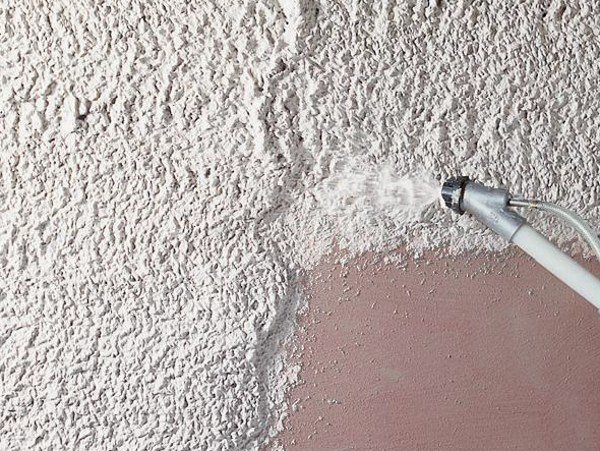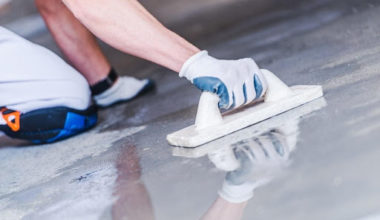Plastering the inside is critical for the smooth finishing of the room. The normal sand substantial plaster is at this point the most widely recognized kind of plastering wherever all through the country, at any rate, the focal points that gypsum offers over the customary sand substantial plaster is making gypsum plaster advancement in current days. Gypsum is a grayish-white sensitive material that contains hydrated calcium sulfate and is for the most part used material in lightweight improvement in western countries. Use Gypsum Plaster Machine for time-consuming plasterwork.
Gypsum is eco amicable. Designers and inside modelers slant toward gypsum these days, as it is everything except hard to work with and saves time. There are various central focuses that gypsum offers over customary sand substantial cement plaster. In this article, we will take you through these focal points, with the objective that when you mean to get your home assembled, you will have the choice to make an informed choice for the plastering in regards to your home walls.
1. Gypsum plaster saves development time
Sand substantial plaster needs 21 days of calming, which is a holding-up period that allows the plaster to set and settle. In these 21 days, the plaster is showered generously with water and allowed to stand. Any work on or over the walls needs to hold on for these 21 days. Gypsum plastering doesn’t have this long holding up period. Gypsum plaster dries and gets comfortable for 3 days, and thusly the improvement pace is faster. The improvement time is saved complex if the construction is multistory. In customary sand substantial plaster, one would have to keep it together for 21 days for each floor, while it will be just 3 days if there ought to be an event of gypsum plastering. Gypsum plaster saves a lot of advancement time. Spraying Plaster On Walls is time-saving.
2. Gypsum plaster effects affect climate
The sand needed for the sand substantial plaster starts from water beds, and that is everything except a completely prudent model according to regular perspective. Gypsum is a typically created substance that is begun from the lake and seawater and is moreover found in thick and wide beds close by the sedimentary rocks. Since it is consistently made by the lake and seawater, Gypsum gets the chance of utilization, and since it is an ordinarily happening substance, it is cordial to nature. Gypsum can similarly be consolidated falsely and Gypsum is utilized in various organizations like clinical, fertilizers, cultivating, etc by gypsum powder providers and makers in India. A protected material doesn’t have any critical prosperity hazard.
3. Gypsum plaster obtains low water use
The 21 days of reestablishing that the sand substantial plaster needs, it moreover ought to be treated with water by pouring an enormous amount of water on the covered walls to soak them completely. This method diminishes the risk of sudden drying and contracting and causing parts, and besides allows the substantial to set slowly ensuring better hardness. Gypsum, in any case, doesn’t need remunerating with water and in this manner saves a lot of water close by time. In a country like India, where water safeguarding strategies are as yet in the making stage, it is basic to reduce water use, also wastage. Gypsum plastering uses less water, and from this time forward is an ideal choice for dried regions and regardless too.
4. Gypsum Works on Low-Solute Water system Water.
Gypsum is utilized to expand the solute grouping of low-solute water utilized for water systems (Traynor 1980). Water system water from streams that presently don’t have wellsprings of leachable salts shrivel infiltrates inadequately into the soil or causes soil particles to corrupt which brings about low-water entrance. Downpour water can act the same way and result in soil compaction. The issue can be adjusted with surface-applied gypsum or application to the water system water.
5. Gypsum Works on Compacted Soil.
Gypsum can assist break with increasing soil (Shainberg et al. 1989) and decline penetrometer obstruction (Lobby et al. 1994a). Soil compaction can be forestalled by not furrowing or driving machinery on soil when it is excessively wet. The compaction in numerous yet not everything soils can be diminished with gypsum, particularly when joined with profound culturing to separate the compaction. Blend with natural alterations likewise helps, particularly in forestalling return of the compaction.
6. Gypsum Makes Somewhat Wet Soils Simpler To Work.
Soils that have been treated with gypsum have a more extensive scope of soil dampness levels where it is protected to work without risk of compaction or deflocculation (Shainberg et al. 1989). This is went without any difficulty of culturing and more successful seedbed planting and weed control. Less energy is required for the culturing.
7. Gypsum Stops Water Overflow and Disintegration.
Gypsum further develops water invasion rates into soils and furthermore the pressure driven conductivity of the dirt (Shainberg et al. 1989). It is security against overabundance water overflow from particularly huge tempests that go with disintegration.
8. Gypsum Diminished pH of Sodic Soils.
Gypsum promptly diminishes the pH of sodic soils or close sodic soils from values frequently more than 9 however normally more than 8 to upsides of from 7.5 to 7.8. These qualities are in the scope of agreeableness for development of most harvest plants. Most likely more than one component is included. As per Lindsay (1979), Ca++ responds with bicarbonate to hasten 〖CaCO〗_3 and deliver protons which decreases the hydrolysis of mud to shape hydroxides. These responses can diminish the occurrence of lime-and bicarbonate-initiated iron lack.
9. Gypsum Expands the pH of Acidic Soils.
One instrument in which gypsum can expand soil pH enough in some corrosive soils to adequately diminish the degree of dissolvable aluminum to develop crops agreeably is the replacement of hydroxyl particles from some earth cross sections by sulfate particles (Sumner 1994).
10. Gypsum Further develops Expanding Dirts.
Gypsum can diminish the enlarging and breaking related with significant degrees of interchangeable sodium on the montmorillonite-type muds (Aldrich and Schoonover 1951). As sodium is supplanted by calcium on this dirt, they grow less and accordingly don’t effectively stop up the pore spaces through which air, water, and roots move.
11. Gypsum Forestalls Waterlogging of Soil.
Gypsum works on the capacity of soil to deplete and not become waterlogged because of a mix of high sodium, enlarging earth, and abundance of water (Aldrich and Schoonover 1951). Enhancements of invasion rate and pressure-driven conductivity with the utilization of gypsum added to the capacity of soils to have satisfactory waste.
12. Gypsum Can Assist with eliminating Overabundance Boron from Sodic Soil.
More boron was filtered from sodic soils when gypsum was applied than when the dirt was drained without gypsum (Bajwa and Sharma 1990).
Gypsum Expands the Strength of Soil Natural Matter.
Gypsum is a wellspring of calcium which is a significant instrument that ties soil naturally to make a difference to dirt in soil which offers steadiness to soil totals (Muneer and Oades 1989). The worth of natural matter applied to soil is expanded when it is applied with gypsum.
There are other companies out there in UAE that provides services such as Floor Screeds.











